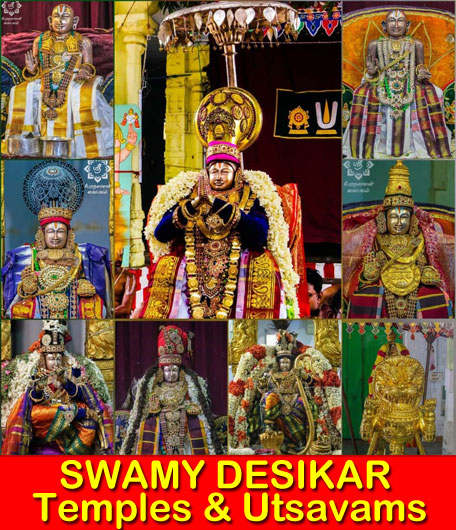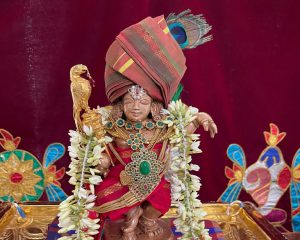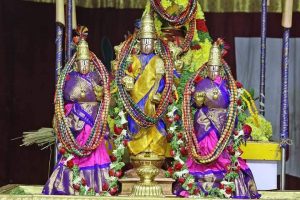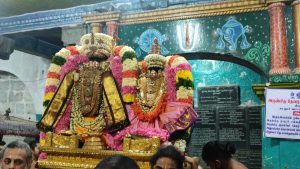Tamil New Year (Puthandu) according to the Hindu lunisolar calendar is the first day of the traditional Tamil New Year. It generally falls on April 14, and is a public holiday in Tamil Nadu and Sri Lanka. Interestingly, along with Tamilians across the world, many other Indian communities also celebrate their traditional new year around the same time. For instance, ‘Vishu; would be celebrated in Kerala, ‘Bihu’ in Assam, ‘Baishakhi’ in Punjab, and ‘Pohela Boishakh’ or in the name of ‘Subo Nababorsho’ in West Bengal. The people of Himachal Pradesh, Haryana, Tripura and Odisha would be celebrating their new year around the middle of April.
The countries like Nepal, Bangladesh, Myanmar, Cambodia, Laos, Mauritius and Thailand would also be celebrating their new year around this time. The influence has also spread to the South and South East Asia. In Malaysia and Singapore, the people belonging to the Tamil community join Sikhs, Malayalees and Bengalis to celebrate the new-year with leaders across the political spectrum, wishing the ethnic Indian community for the new- year. Special religious events are held in Hindu temples, in Tamil community centres and in Gurudwaras. Cultural programmes and media events also take place around this time and in a nutshell, it is a day of celebration for the Indian community in abroad.
Tamil disapora celebrate the Puthandu with a firm belief that the festival would augur well for their economic growth and improve their standard of living throughout the year. On the auspicious day, people wear new clothes and visit temples. In some parts of Tamil Nadu, the festival is also called ‘Chittirai Vishu’. The prayer offering includes three fruits, mango, jackfruit, and banana, besides money in the form of coins, gold or silver jewellery, a mirror, flowers, betel leaves and areca nut. Rangolis called Kolams are drawn using rice flour on the home entrances. A feast is enjoyed on the occasion as people sit down together dressed in their best traditional clothes after having paid respects to the elders in the family. The people in Tamil Nadu invariably wear dhotis marking their Puthandu. It refers to the Sangam period when the poet ‘Nakkiran’ spoke and sung about the relevance of the Tamil New Year.
In Sri Lanka, the people observe the new-year with the first financial transaction known as the ‘Kaivishesham’. The Tamil community in the Island Nation is taking earnest efforts to celebrate the festival like every year, despite the country is rocked with economic disaster and is in turmoil for quite some time. In Tamil Nadu, especially in Madurai, the festival is celebrated with much fanfare in the Meenakshi temple every year, with a huge exhibition called, ‘Chitterai Porutkaatchi’. A big car festival would be held at ‘Tiruvidaimarudar’ near ‘Kumbakonam’. The festival is also are celebrated with significance at ‘Tiruchirappali’ and ‘Kanchipuram’.
A large number of devotees believe that Lord Brahma began the creation of the universe on the day of Puthandu. There are also several references to the Tamil New year being celebrated in the month of April in early Tamil literature. Nakkiran also mentioned that the sun moves from Mesha or Chitteraivai 11 signals of the zodiac. Kudulur Kizhaar, a renowned scholar during that period, considered the Mesh Rashi or Aries zodiac sign as the beginning of a new and fresh year. There is no iota of doubt that Puthandu holds religious significance as many people believe that t Lord Indra, the Prince of harmony came to Earth on this day to signify peace and serenity on the planet.
Puthandu is also observed with ‘arpudu’ or the first ploughing of the ground to prepare for the new agricultural cycle. A special dish called ‘Mangai-pachadi’ is prepared from a variety of flavours, similar to pacchadi of new-year foods of ‘Ugadi’ and ‘Vishu’. A day before Puthandu, Tamil women decorate their houses with ‘Kolam’ to welcome joy and prosperity in their homes. Cleaning the house on the day before or on Puthandu and setting up a tray filled with fruits, flowers, and other items that are considered auspicious is yet another common ritual witnessed and observed by many Tamil families. The people in general take an herbal bath to clean themselves thoroughly. Turmeric bath is common among Tamil women.
-K.V. Venugopal








